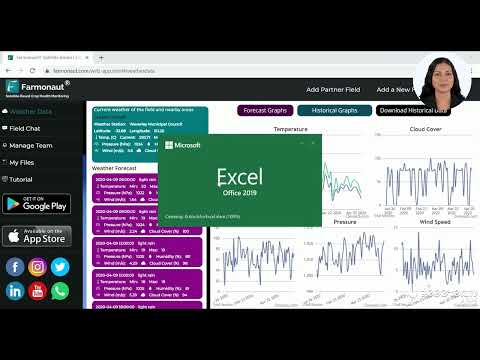California Storm Aftermath: Analyzing Mudslide Risks and Drought Impact on Southern Ecosystems

“Recent California storms prompted evacuation orders in wildfire-scarred areas, affecting thousands across multiple counties.”
As we delve into the aftermath of the recent California storms, we find ourselves facing a complex web of environmental challenges that highlight the delicate balance between much-needed rainfall and the potential for devastating mudslides. The Southern California mudslide risk has reached critical levels, prompting urgent action from authorities and residents alike. In this comprehensive analysis, we’ll explore the far-reaching consequences of these severe weather events on infrastructure, public safety, and the environment, while also examining how communities are adapting to these challenges and preparing for future climate-related risks.
The Perfect Storm: Wildfires, Drought, and Heavy Rainfall
Southern California’s recent history of wildfires has set the stage for a potentially catastrophic scenario. The loss of vegetation on hillsides due to these fires has significantly increased the risk of mudslides and debris flows. When heavy rains saturate these bare slopes, the soil becomes unstable, leading to dangerous mudslides that can cause extensive damage to property and infrastructure.
The Pacific Coast Highway debris flow incident serves as a stark reminder of the power of these natural forces. In Malibu, a Los Angeles Fire Department vehicle was pushed into the ocean by a sudden rush of mud and debris, highlighting the unpredictable nature of these events. Fortunately, the firefighter inside was able to escape with minor injuries, but the incident underscores the serious risks faced by both residents and first responders in affected areas.
Flash Flood Warnings and Evacuation Orders
As the storm system intensified, the National Weather Service issued flash flood warnings for a significant portion of eastern Los Angeles County. These warnings prompted local authorities to issue evacuation orders for areas near wildfire-scarred hillsides, recognizing the heightened risk of mudslides in these vulnerable locations.
The decision to evacuate is never taken lightly, but it’s a crucial step in ensuring public safety. Residents in high-risk areas were urged to have go-bags ready and to heed the warnings of local officials. The distribution of sandbags became a priority, with communities working together to protect homes and businesses from potential flooding and debris flows.
California Storm Damage: A Widespread Impact
The recent storms have left a trail of destruction across Southern California, affecting major roadways, causing power outages, and disrupting daily life for thousands of residents. Some of the most significant impacts include:
- Closure of sections of the Pacific Coast Highway due to mudslides and debris flows
- Flooding in urban areas, with some intersections submerged under several feet of water
- Rock and mudslides blocking mountain roads and canyon passes
- Widespread power outages affecting over 30,000 customers across the state
- Transportation disruptions, including highway pileups in neighboring states
The extent of the damage serves as a sobering reminder of the power of nature and the importance of preparedness in the face of extreme weather events.
Drought, Vegetation Loss, and Increased Erosion Risk
While the recent rainfall has provided some relief to drought-stricken areas, it also presents a double-edged sword. Much of Southern California remains in extreme or severe drought conditions, according to the U.S. Drought Monitor. The prolonged dry spell has led to significant vegetation loss, which in turn increases the risk of soil erosion during heavy rain events.
Daniel Swain, a climate scientist at the University of California, Los Angeles, warns that while the area desperately needs rain, the intensity of recent storms might bring too much too quickly. This rapid influx of water on parched land can lead to dangerous runoff and flash flooding, particularly in areas already compromised by wildfire damage.

Community Response and Preparedness
In the face of these challenges, communities across Southern California have mobilized to protect themselves and their neighbors. Some key preparedness measures include:
- Distribution of sandbags to residents in high-risk areas
- Positioning of temporary concrete barriers to redirect potential debris flows
- Deployment of rescue swimmers in flood-prone regions
- Public education campaigns on emergency preparedness and evacuation procedures
These efforts demonstrate the resilience and solidarity of Californians in the face of natural disasters. However, they also highlight the ongoing need for long-term solutions to address the root causes of these environmental challenges.
The Role of Technology in Disaster Preparedness and Response
As we grapple with increasingly frequent and severe weather events, technology plays a crucial role in helping communities prepare for and respond to natural disasters. Advanced weather monitoring systems, satellite imagery, and AI-powered predictive models are becoming invaluable tools in the fight against climate-related risks.
One such technological solution is offered by Farmonaut, a pioneering agricultural technology company that provides advanced, satellite-based management solutions. While primarily focused on agricultural applications, Farmonaut’s technology has potential applications in disaster preparedness and environmental monitoring.
Farmonaut’s satellite-based monitoring systems could be adapted to track vegetation health in wildfire-prone areas, helping to identify regions at higher risk of erosion and mudslides. Additionally, their AI-powered advisory system could potentially be used to generate early warning alerts for weather-related risks, complementing existing forecasting methods.
“Weather-related power outages impacted thousands of residents along the West Coast during the severe storm system.”
Analyzing the Storm’s Impact: A Regional Comparison
To better understand the varying effects of the recent storms across different parts of California, we’ve compiled a comprehensive comparison table. This data helps illustrate the complex interplay between rainfall, pre-existing drought conditions, and mudslide risks.
| Region | Rainfall Amount (inches) | Mudslide Risk Level | Reported Incidents | Evacuation Status | Pre-existing Drought Conditions | Vegetation Loss (%) |
|---|---|---|---|---|---|---|
| Los Angeles County | 3-6 | High | Road closures, power outages | Yes | Extreme | 40-60 |
| San Diego County | 2-4 | Medium | Localized flooding | Partial | Severe | 30-50 |
| Central Coast | 4-8 | High | Debris flows, highway closures | Yes | Extreme | 50-70 |
| San Francisco Bay Area | 2-5 | Medium | Small landslides, power outages | Partial | Severe | 20-40 |
| Orange County | 1-3 | Medium | Road debris, minor flooding | No | Severe | 30-50 |
This table clearly illustrates the varied impact of the storm across different regions of California. Los Angeles County and the Central Coast appear to be the hardest hit, with high rainfall amounts coinciding with extreme pre-existing drought conditions and significant vegetation loss. These factors combine to create a high mudslide risk level and necessitate evacuation orders.
In contrast, areas like San Diego County and the San Francisco Bay Area experienced less severe rainfall but still face considerable challenges due to their drought conditions and vegetation loss. The data underscores the importance of localized response strategies tailored to each region’s specific risks and vulnerabilities.
Long-term Environmental Implications
While the immediate focus is on public safety and infrastructure protection, we must also consider the long-term environmental implications of these extreme weather events. The cycle of drought, wildfire, and intense rainfall can have lasting effects on California’s ecosystems:
- Soil degradation and erosion in wildfire-affected areas
- Changes in plant communities due to altered water availability and soil conditions
- Impacts on wildlife habitats and migration patterns
- Potential long-term changes in local microclimates
Understanding these ecological consequences is crucial for developing sustainable land management practices and climate adaptation strategies.
The Role of Satellite Technology in Environmental Monitoring
As we face increasingly complex environmental challenges, the importance of accurate and timely data cannot be overstated. Satellite technology, such as that employed by Farmonaut, offers powerful tools for monitoring and analyzing large-scale environmental changes.
Farmonaut’s API and developer documentation provide access to valuable satellite and weather data that could be instrumental in studying the impacts of severe weather events on vegetation and soil conditions. While primarily designed for agricultural applications, these tools have potential uses in environmental research and disaster preparedness.
Climate Change and Future Preparedness
The recent storms in California serve as a stark reminder of the increasing frequency and intensity of extreme weather events linked to climate change. As we move forward, it’s crucial to develop comprehensive strategies that address both immediate disaster response and long-term climate resilience.
Key areas of focus should include:
- Investing in green infrastructure to improve water absorption and reduce runoff
- Implementing stricter building codes in high-risk areas
- Expanding early warning systems and public education programs
- Developing more robust evacuation plans and emergency response protocols
- Promoting sustainable land use practices to reduce erosion and wildfire risk
By taking a proactive approach to climate adaptation, we can help mitigate the impacts of future storms and protect our communities and ecosystems.
Conclusion: A Call for Resilience and Adaptation
The recent California storms have exposed the vulnerabilities of our infrastructure and ecosystems in the face of extreme weather events. As we work to recover and rebuild, it’s clear that we must also focus on building long-term resilience to these climate-related challenges.
By leveraging advanced technologies, implementing sustainable practices, and fostering community preparedness, we can create a more resilient California better equipped to face the environmental challenges of the future. The path forward requires collaboration, innovation, and a commitment to protecting both our communities and the natural world that sustains us.
FAQ Section
- Q: What causes mudslides after wildfires?
A: Wildfires destroy vegetation that normally holds soil in place. When heavy rains occur, the bare soil becomes saturated and unstable, leading to mudslides. - Q: How can residents prepare for potential mudslides?
A: Residents should stay informed about weather forecasts, heed evacuation orders, use sandbags to divert water flow, and have an emergency kit ready. - Q: What is the relationship between drought and mudslide risk?
A: Drought conditions can lead to vegetation loss and soil degradation, making areas more susceptible to mudslides when heavy rains occur. - Q: How long does the mudslide risk persist after a heavy rain event?
A: The risk can persist for days or even weeks after rainfall, depending on soil saturation levels and the stability of affected slopes. - Q: What role does climate change play in these extreme weather events?
A: Climate change is likely increasing the frequency and intensity of both droughts and severe storms, exacerbating the cycle of wildfire and mudslide risks.
Earn With Farmonaut: Affiliate Program
Earn 20% recurring commission with Farmonaut’s affiliate program by sharing your promo code and helping farmers save 10%. Onboard 10 Elite farmers monthly to earn a minimum of $148,000 annually—start now and grow your income!







